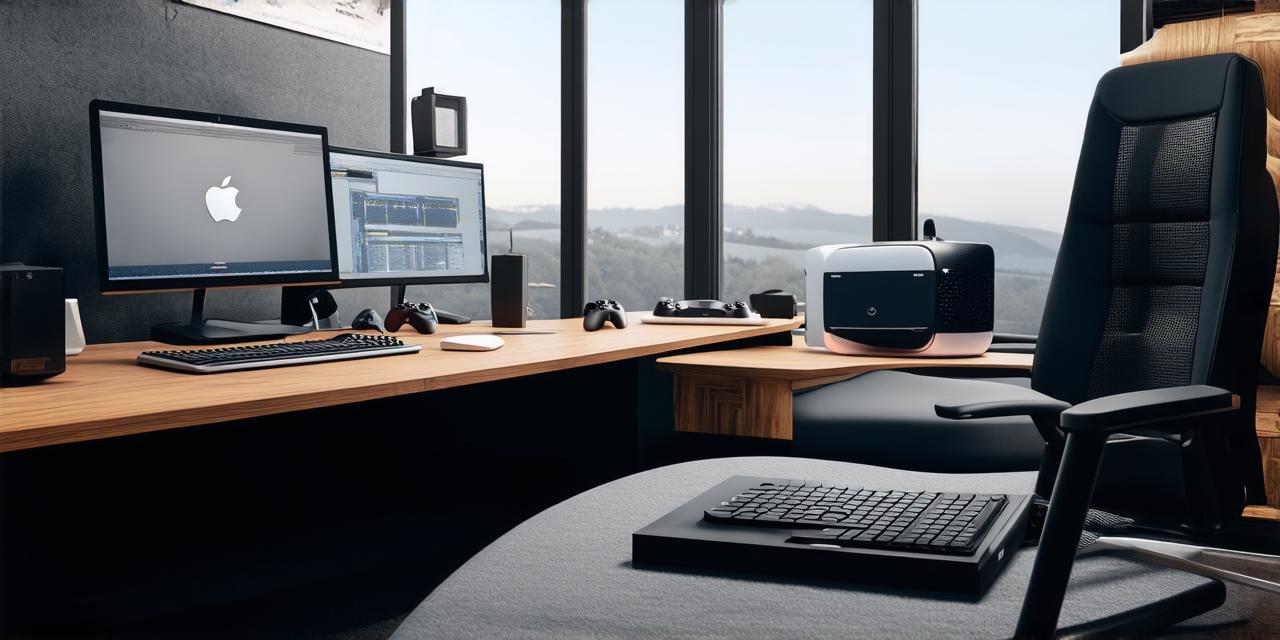Virtual Reality (VR) technology is becoming increasingly popular in various industries, including gaming, education, and healthcare. However, creating VR content can be challenging, especially for those who are new to the field. In this article, we will provide tips and tricks to help optimize VR development on Mac for better performance and user experience.
1. Choose the Right Hardware
The first step in optimizing VR development on Mac is choosing the right hardware. While Apple has not yet released a dedicated VR headset, you can still use third-party VR devices such as the Oculus Quest or HTC Vive with your Mac using a compatible USB connection or Wi-Fi connection. When selecting a VR device, consider the following factors:
- Resolution and refresh rate: A higher resolution and refresh rate will provide a more immersive experience for the user. However, it can also require more powerful hardware to run smoothly.
- Field of view (FOV): The field of view determines how much of the environment is visible at once. A wider FOV can be more immersive but may also cause motion sickness in some users.
- Tracking accuracy: Accurate tracking is essential for a smooth VR experience. Consider the device’s tracking technology and sensors to ensure accurate tracking.
- Compatibility with your Mac model and software: Some VR devices may not be compatible with certain Mac models or operating systems. Research the compatibility before purchasing a device.
2. Optimize Your Software
The next step is to optimize your software for VR development on Mac. While there are many VR development tools available, some may not be compatible with your Mac or may require additional software or plugins. Therefore, it’s crucial to choose a reliable and user-friendly VR development tool that works seamlessly with your Mac operating system.
Some popular VR development tools for Mac include Unity, Unreal Engine, A-Frame, and WebVR. Each of these tools has its strengths and weaknesses, so it’s essential to research and test them to find the one that best suits your needs and preferences. For example, Unity is a versatile tool that supports both 2D and 3D development, while Unreal Engine is known for its high-performance graphics capabilities.
3. Use the Right Mac Settings
To further optimize VR development on Mac, it’s important to use the right Mac settings. Here are some tips:
- Increase the display resolution and refresh rate of your Mac monitor(s) to match the VR device’s resolution and refresh rate. This will help reduce screen tearing and improve the overall user experience.
- Enable full-screen mode on your Mac to maximize the display area for VR content.
- Disable unnecessary background processes and close unused applications to free up system resources and improve performance.
- Adjust the power settings of your Mac to conserve energy and reduce heat generation, which can affect performance and stability.
4. Improve Performance with Optimization Techniques
In addition to optimizing your hardware and software, there are several techniques you can use to improve VR development performance on Mac. Here are some examples:
- Use lower-poly models for 3D objects in your VR content to reduce the amount of data that needs to be processed by the Mac’s graphics card. This can help improve frame rates and reduce loading times.
- Optimize textures and lighting to reduce the number of draw calls and improve frame rates. For example, use texture compression techniques to reduce the size of textures without sacrificing quality.
- Implement culling techniques to hide objects that are not visible in the current view, reducing the amount of data that needs to be processed. This can help improve performance and reduce loading times.
- Use LOD (Level of Detail) systems to dynamically adjust the level of detail of 3D objects based on their distance from the camera. This can help reduce the load on the graphics card and improve frame rates.
5. Test and Iterate
Finally, it’s essential to test and iterate your VR content regularly to ensure optimal performance and user experience. Here are some tips:
- Conduct regular performance tests using specialized software such as Oculus SDK or Unity Profiler to identify and fix performance bottlenecks.
- Get feedback from users and make adjustments based on their feedback. This can help improve the overall user experience and ensure that your VR content is optimized for Mac.
